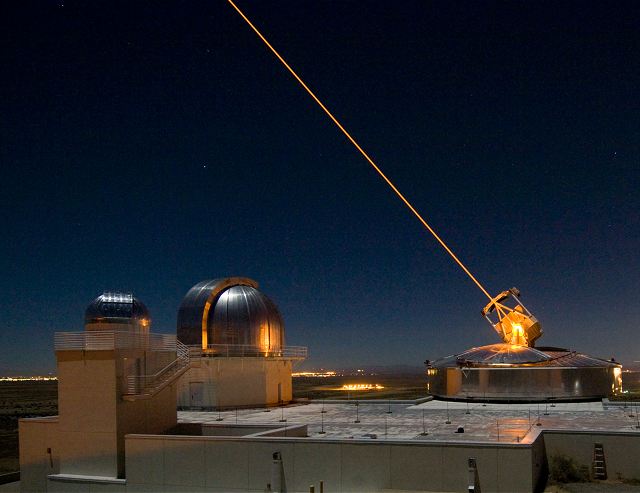|
|
|||
|
Military Defense Industry Technology - Laser weapons
|
|||
|
|
|||
| The U.S. Army's S&T effort is committed to pursuing high-energy laser weapons. | |||
|
The U.S. Army's S&T (Science and Technology) effort is committed to pursuing high-energy lasers, said Mary J. Miller, deputy assistant secretary of the Army for Research and Technology. That effort has been used in an analysis of alternatives for the Indirect Fire Protection Capability program of record.
|
|||
|
|
|||
 The Sodium Guidestar at the Air Force Research Laboratory's Starfire Optical Range resides on a 6,240 foot hilltop at Kirtland Air Force Base, N.M. The Army and Navy is developing its own laser weapons systems. (Photo Credit: U.S. Air Force photo) The Sodium Guidestar at the Air Force Research Laboratory's Starfire Optical Range resides on a 6,240 foot hilltop at Kirtland Air Force Base, N.M. The Army and Navy is developing its own laser weapons systems. (Photo Credit: U.S. Air Force photo) |
|||
|
|
|||
|
esponding to lawmakers' questions about how close the Army is to developing offensive and defensive directed-energy weapons, Mary J. Miller responded: "I believe we're very close." Miller, deputy assistant secretary of the Army for Research and Technology, and other experts testified before the House Armed Services Committee's Subcommittee on Emerging Threats and Capabilities, Feb. 24. Miller's topic was the Army's Science and Technology, or S&T, Program for fiscal year 2017. Walker also said the Air Force is working with Special Operations Command to develop an offensive laser that will be fitted to AFSOC AC-130 gunships. Part of that technology, he said, includes "beam-steering and power and thermal management."
Dr. Stephen Welby, assistant secretary of Defense for Research and Engineering, Office of the Under Secretary of Defense for Acquisition, Technology and Logistics, replied that all activities of each of the services are coordinated through the High Energy Laser Joint Technology Office. |
|||
The U.S. Army's S and T effort is committed to pursuing high-energy laser weapons 12702164
- Posted On















